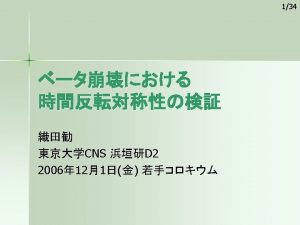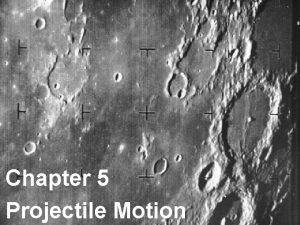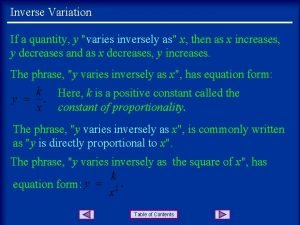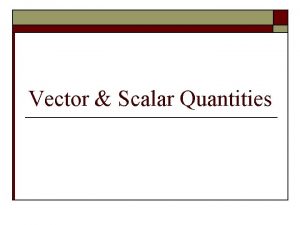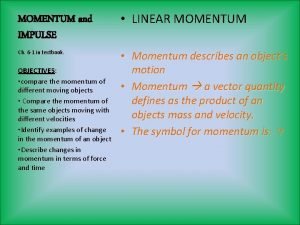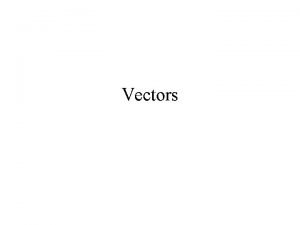Vectors 34 Vectors Vector A quantity which can








- Slides: 8

Vectors 3+4=?

Vectors Vector – A quantity which can be described by it’s magnitude and direction. Scalar – A quantity which can be described by it’s magnitude only. Magnitude – How big something is. Hint – You can point in the direction of a vector.

Vectors Examples of Vectors and Scalars Vectors Scalar Time (3 min) Temperature o (32 ) Displacement (4 ft North) Distance and Length (4 ft) Velocity (100 Km/hr South) Speed(100 Km/hr) Force (gravity downward) Weight (Newton Downward) Mass (5 Kg)

Vectors Drawing Vectors or “Graphing” Vectors An arrow is used to represent a vector. Arrowhead represents direction. Length represents magnitude. Bad Vector: 3 m

Vectors Adding scalar quantities Mass: 1 kg + 1 kg = 2 kg Time: 2 s + 4 s = 6 s Distance: 10 m + 5 m = 15 m Since we are not dealing with direction we simple add the quantities.

Vectors Adding vector quantities (Tip to Tail or Start to Finish) Unlike scalars, vectors have a direction and we cannot add them like we do with scalar quantities. Vector “A” Vector “B” Finish Start Vector “C”= Resultant = the addition of two of more vectors.

Why Does It Matter? 1) How much did the person walk? 3 m Distance = 3 m + 4 m = 7 m 4 m 2) How far is the person from its initial position? a 2 + b 2 = c 2 Displacement = 5 m 37 o E of N

Example: Find the resultant of 4. 3 m N and 8. 5 m E 1 cm = 1 m n n 8. 5 m n 4. 3 m 26 o 9. 6 m n n Resultant = 9. 6 m, 260 E of N Procedure: 1. Choose an appropriate scale so each vector is about 5 – 10 cm 2. Draw the vectors to scale 3. Draw and measure the resultant 4. Measure the angle from start to resultant
 What's the difference between scalar and vector
What's the difference between scalar and vector Scalar and vector quantities
Scalar and vector quantities Quantity has magnitude only
Quantity has magnitude only Scalar quantity
Scalar quantity Aristotle view of projectile motion
Aristotle view of projectile motion Y varies inversely as x example
Y varies inversely as x example Scalar quantity characteristics
Scalar quantity characteristics Momentum is a vector quantity
Momentum is a vector quantity Which has a greater momentum a truck with a mass of 2250 kg
Which has a greater momentum a truck with a mass of 2250 kg



